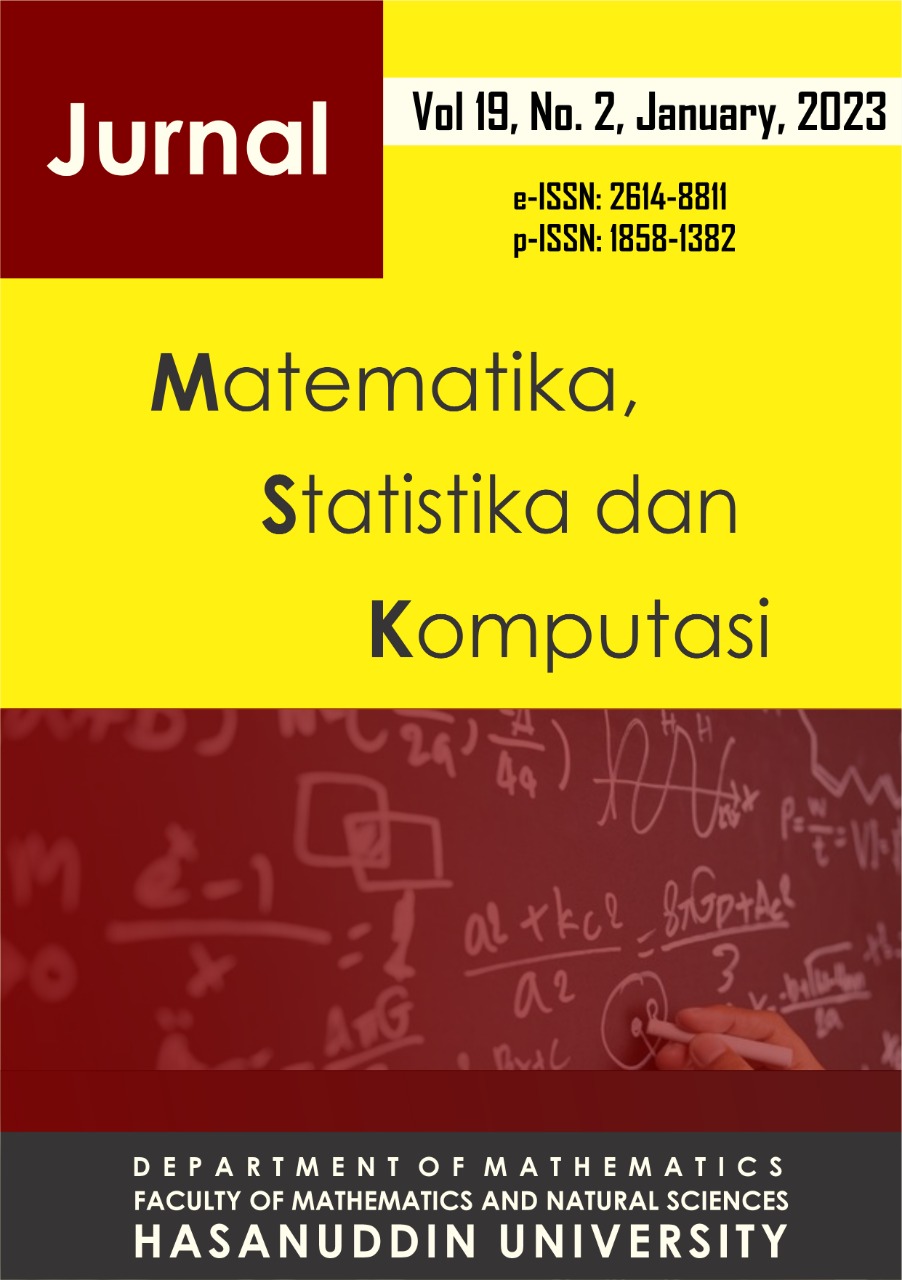Determining the Inverse of a Vandermonde Matrix Using Partial Fraction Decomposition Method
DOI:
https://doi.org/10.20956/j.v19i2.23916Keywords:
Selected:Vandermonde matrix, partial fraction decomposition, adjoin method, inverseAbstract
One method that can be used to calculate the inverse of a matrix is the adjoin method. In this method, the process begins by calculating the value of the determinant and adjoin of a matrix. This study discusses a method for calculating the inverse, especially on the Vandermonde matrix using partial fraction decomposition. The advantage of this method is that it can calculate the inverse of a matrix, without the need to calculate the value of the determinant and adjoin of a matrix. The steps taken are to define a rational function and then write it in the form of a partial fraction, then by using a formula to calculate the coefficient of a partial fraction, a formula is derived to calculate the inverse of the Vandermonde matrix. After obtaining the formula for calculating the inverse, then comparing the results of the inverse calculation of the Vandermonde matrix using the partial fraction decomposition method with the adjoin method. The results obtained a formula to calculate the inverse of the Vandermonde matrix, V-1=WxA. Based on the case examples given, it can be concluded that the results of the inverse calculations performed using the partial fraction decomposition method are the same as the results of the calculations performed using the adjoin method. However, the calculations performed using the partial fraction decomposition method are more effective and efficient than using the adjoin methodDownloads
References
Anton, H., & Rorres, C., 2004. Aljabar Linear Elementer Versi Aplikasi Jilid 1, Edisi 8. Erlangga, Jakarta.
Chen, C. F.& Leung, K. K., 1981. A new look at partial fraction expansion from a high-level language viewpoint. Computers and Mathematics with Applications, Vol. 7, No. 5, 361–367.
Eisinberg, A., & Fedele,G., 2006. On The Inversion of The Vandermonde Matrix. Applied Mathematics and Computation. Vol. 174, No. 2, 1384–1397.
Klein, A. & Spreij, P., 2003. Some Results on Vandermonde Matrices with an Application to Time Series Analysis. SIAM Journal on Matrix Analysis and Applications, Vol. 25, No. 1, 213–223.
Man, Y. K., 2015. On The Inversion of Vandermonde Matrix Via Partial Fraction Decomposotion. IAENG Transaction on Engineering Sciences, 57–66.
Moya-Cessa, H. & Soto-Eguibar, F., 2011. Inverse of the Vandermonde and Vandermonde Confluent Matrices. Applied Mathematics and Information Sciences, Vol. 5, No. 3, 361–366.
Oruç, H., 2007. L U Factorization of the Vandermonde Matrix and its Applications. Applied Mathematics Letters, Vol. 20, No. 9, 982–987.
Purnamayanti, Thresye, Hijrianti, N.,. 2012. Formula Binet Dan Jumlah n Suku Pertama Pada Generalisasi Fibonacci Dengan Metode Matriks. Jurnal Matematika Murni dan Terapan, Vol. 6, No. 1, 38–46.
Putra, M. E. K. & Aryani,F., 2017. Invers Matriks Positif Menggunakan Metode Adjoin. Jurnal Sains Matematika dan Statistika. Vol. 3, No. 1, 45–52.
Rawashdeh, E. A., 2019. A Simple Method for Finding The Inverse Matrix of Vandermonde Matrix. Matematiˇcki Vesnik, Vol. 3, No. 71, 207–213.
Varberg, D., Purcell,E.J., Rigdon, D. E., 2011. Kalkulus Jilid 2. Erlangga, Jakarta.
Downloads
Published
How to Cite
Issue
Section
License
Copyright (c) 2023 Author and publisher

This work is licensed under a Creative Commons Attribution 4.0 International License.

This work is licensed under a Creative Commons Attribution 4.0 International License.
Jurnal Matematika, Statistika dan Komputasi is an Open Access journal, all articles are distributed under the terms of the Creative Commons Attribution License, allowing third parties to copy and redistribute the material in any medium or format, transform, and build upon the material, provided the original work is properly cited and states its license. This license allows authors and readers to use all articles, data sets, graphics and appendices in data mining applications, search engines, web sites, blogs and other platforms by providing appropriate reference.








